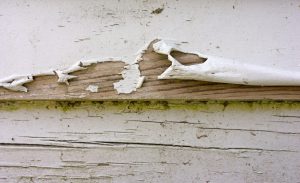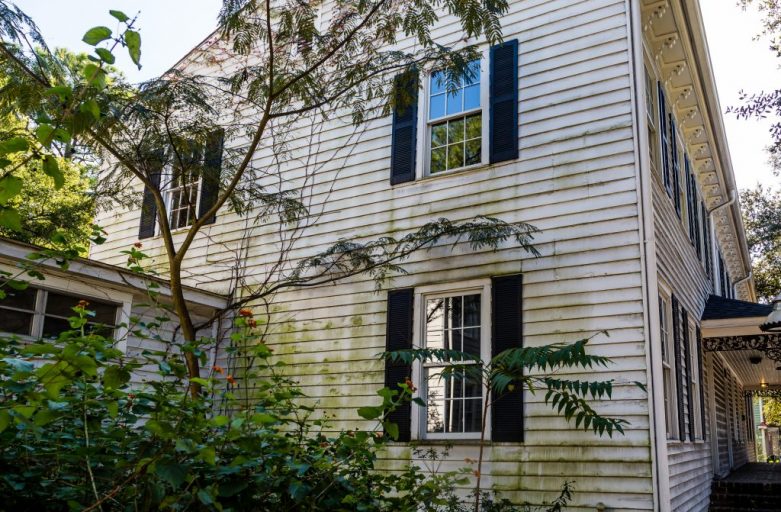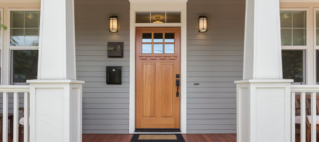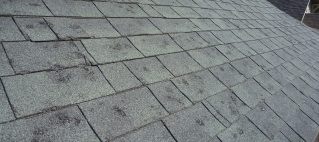If there isn’t noticeable damage to your home’s siding from a storm or other accident, you probably aren’t thinking about siding replacement at all. However, perhaps you should be thinking about it, even if there hasn’t been an “event” to put it on your radar. Siding lasts a long time, but not forever.
The siding on your home has been through years of punishment from the weather, that wears it out overtime. Replacing your siding before significant damage has occurred can prevent more substantial damage, like water leaks, that is very costly to repair.
How Do You Know If Your Siding Needs Replacing?
There are several signs to look for in your home. If you want assistance figuring out if you need your siding replaced, call a siding contractor. Built Strong Exteriors offers free inspections, and they will let you know whether it’s time for a siding replacement and how much it will cost.
To decide if you should call a siding contractor to replace your siding, look for these signs.
1. Excesive Heating Bill or Loos Wallpaper or Peeling Paint

You have high heating and cooling bills or loose wallpaper or peeling paint inside your home. Have the heating and cooling bills been creeping up, or suddenly spiked? If you compare how much you were paying a year ago versus today, and there is a stark difference, you might need new siding.
Worn-out siding can let in air that makes your heating and cooling system work harder — and increases your bills. If you have good insulation in your attic and unfinished spaces, and your energy costs are on the rise, it’s probably time to give your siding a thorough inspection.
Peeling paint or your wallpaper is pulling away from the walls could be a sign of siding damage. Faulty siding can leak water as well as air. This moisture can slowly make its way through the wallboard and cause severe damage to your interior walls.
2. Your House Needs Frequent Repainting.

If you have repainted your siding in the last five years and it looks like it could use a new paint job again, there is probably something wrong with your siding.
Quality siding should maintain its shape and color for at least eight if not ten, years. If you notice cracks, chips, warping, or peeling, there is a good chance of a problem, and you should consider siding replacement.
3. You Notice Visible Signs of Damage.
Walk around your house and carefully look at your siding for warped or rotten boards, or other damage you can easily see. Take a screwdriver and carefully poke under the damaged siding to see how firm the area underneath is. If the underlayer is soft, immediate siding replacement is in order.
If you notice a couple of pieces of cracked siding, a partial repair is possible. However, inspect the area underneath the broken pieces. Again, if the area is soft, your siding could be covering additional damage.
The larger the area of cracked or broken siding, the more severe the problem may be. Contact a siding contractor for a thorough inspection. If you don’t fix this damage, water can get behind the siding and cause costly and pervasive damage.
4. You Notice Bubbling, or Mold, Mildew, and Fungus Growth.

Bubbles under the surface of wood or composite siding is likely a sign of trapped moisture. This moisture isn’t only damaging your siding; it’s harming your walls. You should immediately call for an inspection if you see bubbles.
Mold, mildew, or fungus growing on your siding, especially near the seams, could also be a sign of moisture penetration. Water getting behind the siding accumulates and creates an environment that mold, mildew, and fungus love. This growth is a cause for further inspection.
5. You Notice Dry Rot, Fading, or Holes in the Siding.
Tapping on your siding with something hard, like the handle of a screwdriver will reveal any sections of dry rot. Dry rot degrades the underlayer of siding, leaving the visible, outer part remains intact. Though the siding may look perfect, dry rot could be eating your siding from within. Tapping on the exterior will reveal weak spots. If dry rot is extensive, your entire home might need siding replacement.
A siding’s rating determines the amount of time it is designed to hold its color. Fading siding is a clue that it may be time to replace it. As the siding fades, its waterproof layer becomes less effective. If you see fading in your siding, it is a sign to start observing more closely and to begin budgeting for a siding replacement.
Holes in your siding can indicate severe issues underneath. Most often, holes are caused by insects. The presence of pests under your siding is cause for concern, but more importantly, the holes allow moisture in. As you have read, moisture underneath your siding can lead to significant damage and costly repairs. If you notice holes, call for a siding contractor to do a more thorough inspection.
Now that you know what you are looking for, it’s time inspect your house. Take a screwdriver to check for damage underneath the siding, and to look for issues like dry rot. Do a thorough investigation of your interior walls, and your energy costs as well. If you notice peeling paint and wallpaper, or your heating and cooling bills have increased, your siding might need replacing.
Built Strong Exteriors has the expertise you can feel comfortable trusting. They will come to your home for a free inspection and find any problems you might not have noticed. Catching problems with your siding before there is more extensive damage will save you both money and headaches. Siding replacement is inevitable some day. Let Built Strong help you determine whether that day is today.




